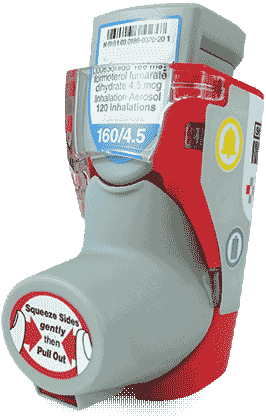Symbicort vs Dulera

What to choose Symbicort or Dulera
Today, there are a lot of medicines that are produced to treat the symptoms of asthma and COPD. Sometimes it is difficult to choose the right and effective drug. It is the doctor's job to examine the patient and prescribe the medication he or she needs. A number of medications that are widely taken for asthma and COPD include the drugs Dulera and Symbicort.
Dulera is used for the treatment of moderate and severe asthma, and Symbicort can be used for severe asthma and COPD. These drugs have similarities, and many people think that they are the same. In fact, they have some similarities, and there are some differences in the composition of the medicines. Symbicort includes formoterol fumarate dehydrate and budesonide, and Dulera contains formoterol fumarate dehydrate and mometasone furoate. Their principle of operation is usually the same. They both help to quickly open the airways in the lungs and restore the patient's breathing process.
Symbicort
This drug is intended to suppress and control the reactions caused by COPD and asthma, when the disease is severe and other medications fail their main purpose. It has an age limit and is available to patients, who are not younger than 6 years old. The components of the drug help to relax the muscles of the bronchi and expand the airways. Symbicort also affects the inflammation in the human’s body by removing it.
Symbicort’s Method of Application
It is recommended to use the Symbicort inhaler daily and take 2 breaths of the medicine in the morning and in the evening. At the discretion of your doctor, you may need to temporarily take Symbicort as it is only used for severe asthma conditions. When your symptoms are well controlled, you may need to change this drug to another.
The side effects of Symbicort may include: nasal congestion, back pain, throat irritation, diarrhea, hoarseness, headache, nausea, vomiting, and muscle pain.
Dulera
Dulera's drug is intended for people of 12 years old and older. It is able to prevent and control the body's reactions to asthma. It can be prescribed in combination with another inhaled medication.
The components of Dulera act on inflammation, reduce it, and help to expand the lungs airways, allowing the necessary air flow to reach the lungs.
Dulera’s Method of Application
Just like Symbicort, Dulera is taken 2 times a day, in the morning and evening, 2 inhalations per application.
It is not recommended for the relieving of sudden asthma symptoms or asthma attacks and is not a life-saving inhaler. It is able to control and prevent asthma symptoms.
Dulera’s adverse reactions may include: back pain, sudden restlessness, dry mouth, cough, headache, dizziness, insomnia, hoarseness, rash, nasal pain, sore throat, and the menstrual cycle disorder among women.
Advice
Before using Dulera or Symbicort, it is necessary to tell the doctor about all the drugs you are taking. Carefully read the instructions for use of the inhaler. Do not give your inhaler to anyone and always carry it with you. Make sure that the inhaler is always filled with the medicine and always try to get a new prescription from your doctor in time.
Always rinse your mouth and throat with water after the inhalation, as frequent use of the inhaler can cause mouth infections.
Observe the dosage strictly. If you forget to take the medicine on time, then you should not take a double dose later. Just inhale according to your next intake plan. If you have any questions, then contact your doctor directly.
Symbicort and Dulera Comparison
| Symbicort | Dulera | |
|---|---|---|
| Type: | Control | Control |
| Manufacturer: | AstraZeneca | Merck & Co. |
| Substance: | Budesonide + Formoterol | Mometasone + Formoterol |
| Dosage: | 100/6, 160/4.5, 200/6, 400/6 | 100/5, 200/5 |
| Avg Price: | $359 | $228 |

